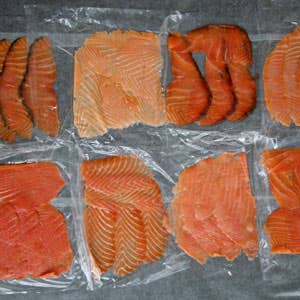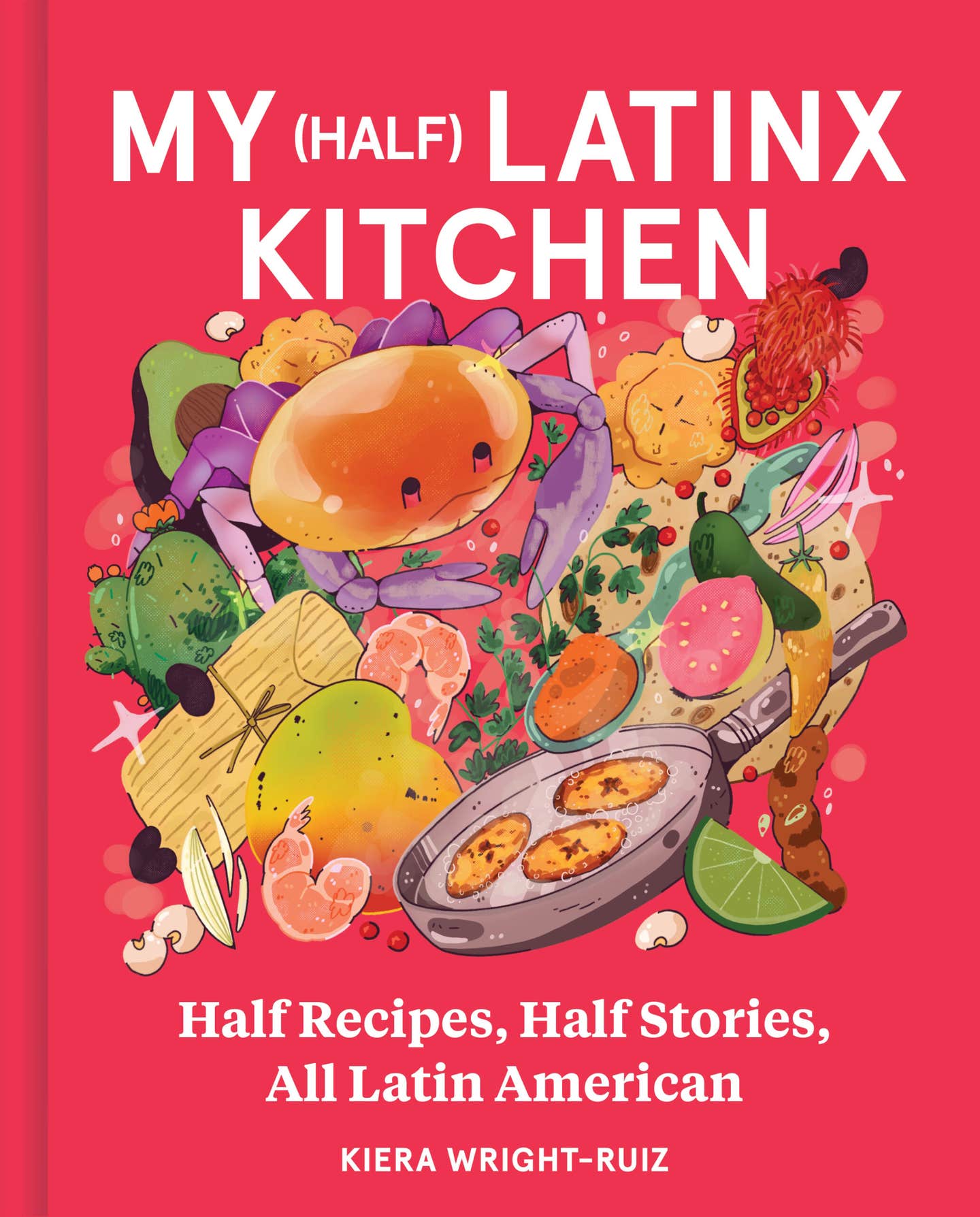
A small sign hangs behind the counter at Russ & Daughters, one of the last old-school emporiums of cured salmon and sundries on Manhattan's Lower East Side; it reads LOX ET VERITAS—salmon and truth. And that's exactly what I happened to be looking for on a recent visit to the store.
While I was working on the salmon articles in issue 112, it struck me as curious that, considering the groundswell of interest in both wild and farmed salmon these days, details about popular preserved varieties of the fish remain elusive. What are the differences between lox, nova, and plain old smoked salmon, anyway?
Niki Federman, the 30-year-old great-granddaughter of the store's founding father, Joel Russ (who started his business from a pushcart in 1911), warned me that the answer wasn't simple. "When people order lox," she told me, "I always ask, 'Are you sure?' " Nowadays, she continued, customers tend to use lox as a catchall term for any kind of cured or smoked salmon, but lox traditionally referred to Pacific varieties, usually king, cured in a very salty brine and not smoked. After the transcontinental railroad started delivering barrels of salted salmon from the Pacific coast to other parts of the country, in 1869, the food (which takes its name from laks, the Yiddish word for salmon) gained popularity in New York City, particularly among Eastern European Jewish immigrants who had brought with them to this country a love of cured and smoked fish.
In his book New York Food (Stewart, Tabori & Chang, 2004), Arthur Schwartz explains that many Jews at the time "lived in tenements with minimal cooking facilities. An already 'cooked' product like lox was akin to convenience food". Not only was it inexpensive, but, like all fish, it was pareve, meaning that, unlike meat, it could be eaten with dairy. Lox thus became a staple of "appetizing" stores that specialized in dairy and cured fish. By the 1930s, many smokehouses had opened in New York to preserve the fresh Pacific salmon arriving by refrigerated rail. Variations on lox emerged, the most popular being nova scotia—nova, or sometimes novy, for short—which differed from lox in that it was smoked and made with Atlantic salmon that came from fisheries in and around the Canadian province of Nova Scotia. As trade expanded over the course of the 20th century, big-city smokehouses in America also began replicating versions arriving from places with their own smoked-salmon traditions, like Ireland, Scotland, and Denmark.
Perhaps one reason that consumers know so little about the details surrounding cured salmon is that the industry has never stopped evolving. According to Buzz Billik, the director of sales and marketing for the Acme Smoked Fish Corporation, a fourth-generation family-owned company in Brooklyn, New York, that smokes fish for retailers, lox was historically defined as being made with Pacific fish but is now usually made with farm-raised Atlantic salmon. The formula isn't set in stone: though lox is traditionally unsmoked, Acme custom-smokes its for some retailers (like the vaunted Barney Greengrass, on Manhattan's Upper West Side). When I was on my fact-finding mission at Russ & Daughters, I asked Jose Reyes, a native of the Dominican Republic who has worked there for 32 years, about other ways the dish has changed over the decades. As he slapped a piece of lox on a wood cutting board, shiny from years of use, and began to slice it expertly with a long, thin blade, he shrugged. "Salmon are just like people," he said. "They change all the time."
Keep Reading
Continue to Next Story










